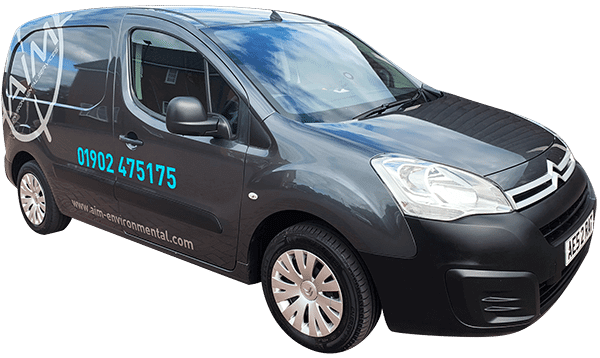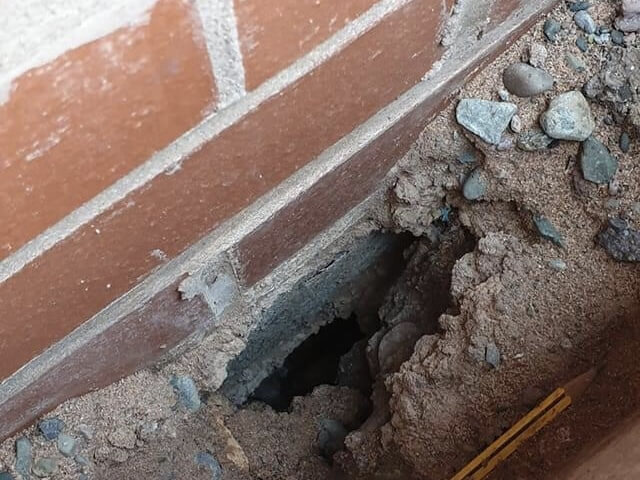Common home and business rodents and pests across Wolverhampton
October 29, 2020

If you are looking for a professional, experienced and affordable pest and rodent control services in Wolverhampton, call in the experts at Aim Environmental Services. We cover the entire West Midlands area, including Birmingham, Dudley, Walsall, Redditch, Solihull, Wolverhampton and Stourbridge. We service both commercial and domestic properties and deal with all types of rodents, pests and vermin infestations.
Some of the most common Wolverhampton pest and rodent control tasks we specialise in dealing with are:
Rats: Rats pose a serious health hazard to homes and businesses across the country and thrive in areas where humans live. The easy availability of food and water helps them multiply at a rapid pace. They weigh between 100-500gms and are around 20-27 cm in length. The most common species is the brown rat and they have a pair of upper and lower incisors that grow continually. They have to gnaw constantly to prevent them from growing out of control that would prevent them from feeding. They are nocturnal and each litter can have 6-11 young rats.
They are carriers of infectious diseases like Leptospirosis, Salmonella, Foot and Mouth Disease, Cryptosporidiosis, Weils Disease and E. coli etc.
Mice: Rated as the number one rodent both in rural and urban homes across the UK. Like their cousins, they gnaw constantly that is the main cause of destruction. They are omnivorous with a preference for grain and seeds. While their daily food consumption is limited, it is their habit of nibbling food items that cause a lot of contamination. Unlike rats that need a water source, mice can do without or a minimum of water. These are also mainly nocturnal although on occasions you might one scampering around in the day. They are prolific breeders and can have as many 2,500 offspring within six months.
Wasps: Nests of wasp are a common occurrence across gardens and properties in the UK. They have distinctive yellow and black stripes and are about 10-15 mm in size. They carry a very painful sting and also can cause an anaphylactic shock in individuals that are allergic to their bite. They make their nests in the eaves of roofs, trees, sheds and crawlspaces in attics and other parts of any property. Wasp nest removal is one of the most common services that we carry out, you can learn more about our wasp removal service here.
Bed bugs: Around 3.5 mm they are generally brown in colour and small in size. While they do not have wings to fly, bed bugs have well-developed limbs by which crawl on both horizontal and vertical surfaces. They are a perpetual nuisance and are commonly found in hostels, B&Bs, hotels, buildings and other places with high human occupancy.
They emit a foul smell that is one way to identify their presence. They are very hardy and can live without sustenance for many months. They can be found in joinery, under furniture, wallpaper and cracks and crevices and are nocturnal by nature. They feed on sleeping hosts and their bite can lead to irritation, itching and other infections.
Grey squirrels: These pesky little creatures require a warm and secure location to create their nest known as dreys. While they generally live on trees, if they get access to roof spaces, they can build their nest on the property. They can be very destructive and damage cables and electrical pipes and also the insulation of homes and businesses.
Fleas: These are found on domestic pets like dogs and cats with their mouths designed in a way to pierce the skin of mammals and suck their blood. They need blood to sustain then and to be able to reproduce. Males and females both need blood as a source of food to survive. They begin life as eggs, that become larvae, grow in a cocoon and become adult fleas. They generally lay their eggs in cracks and crevices, rugs, carpets and upholstery.
Ants: Around 3 to 5mm in length the most common ants in the country is the Black Garden Ant. They are dark brown and enter properties when they need to forage for food. Any foodstuff that is left out in the open will attract them in droves, so care must be taken to keep all food items in secure containers. They have one female that produces ants, the Queen and it is the workers that carry food back to the nests. Ants breed in large numbers in July and August, mostly after a storm.
Flies: Apart from being a pesky nuisance and difficult to control, fleas also carry diseases and contaminate food items left in the open. While some bite into food, others have a more distasteful habit of secreting saliva on food and sucking the liquid. They carry bacteria and are among the most dangerous contaminators of food. Some of the diseases they spread include cholera, dysentery, food poisoning and typhoid. They also can carry a variety of parasitic worm eggs and deposit them on surfaces. Apart from electric traps, some chemicals can be used to control and treat the issue.
Moths: The moths that are found in many a home in the country are mainly from two species Pyralidae and Tineidae. They can damage furnishings, carpets and clothes. They can also be found at locations where food products are stored like warehouses, homes, bakeries etc. They are small in size and drab in colour with nothing especially distinctive in their appearance. Their larvae are either white or pale yellow. Most of the moths that are found in homes and properties have spread through commercial activities.
Cockroaches: There are mainly two species found in the UK, the Oriental cockroach (20-24 mm) and the German cockroach (10-15 mm). While the outdoor climate in the UK is not conducive to their survival, they flourish around warm areas of with central heating especially in restaurants, bakeries, hotels and hospitals along with sinks and pipes at homes. Both species eat almost kind of food items and emerge to forage especially in the night time. They contaminate all surfaces they come in contact with and can carry different diseases.
Pigeons: While they are harmless and attractive creatures, their appeal can quickly vanish if they choose to nest on your property. They breed around 8 clutches annually and the nests are built of sticks and twigs in lofts and crevices of roofs. Their droppings are not only a source of nuisance but also may carry a fungal infection Cryptococcus Neoformans. Even when the droppings dry, they can cause infection. Those that have poor immunity because of age, the very young and old and those with a weakened immunity can catch the infection. Other diseases they may be carriers of include encephalitis, toxoplasmosis and psittacosis.
For any kind of rodent or pest control Wolverhampton professional services get in touch with AIM Environmental, 24/7 on 01902 475175 or message at https://aim-environmental.com/contact-us/.


Contact Us Today same day call out available
Having rats, mice and squirrels in your property or place of work can be traumatising, not only for the effect on your health, but also the damage that can be caused to personal property, belongings or stock.









